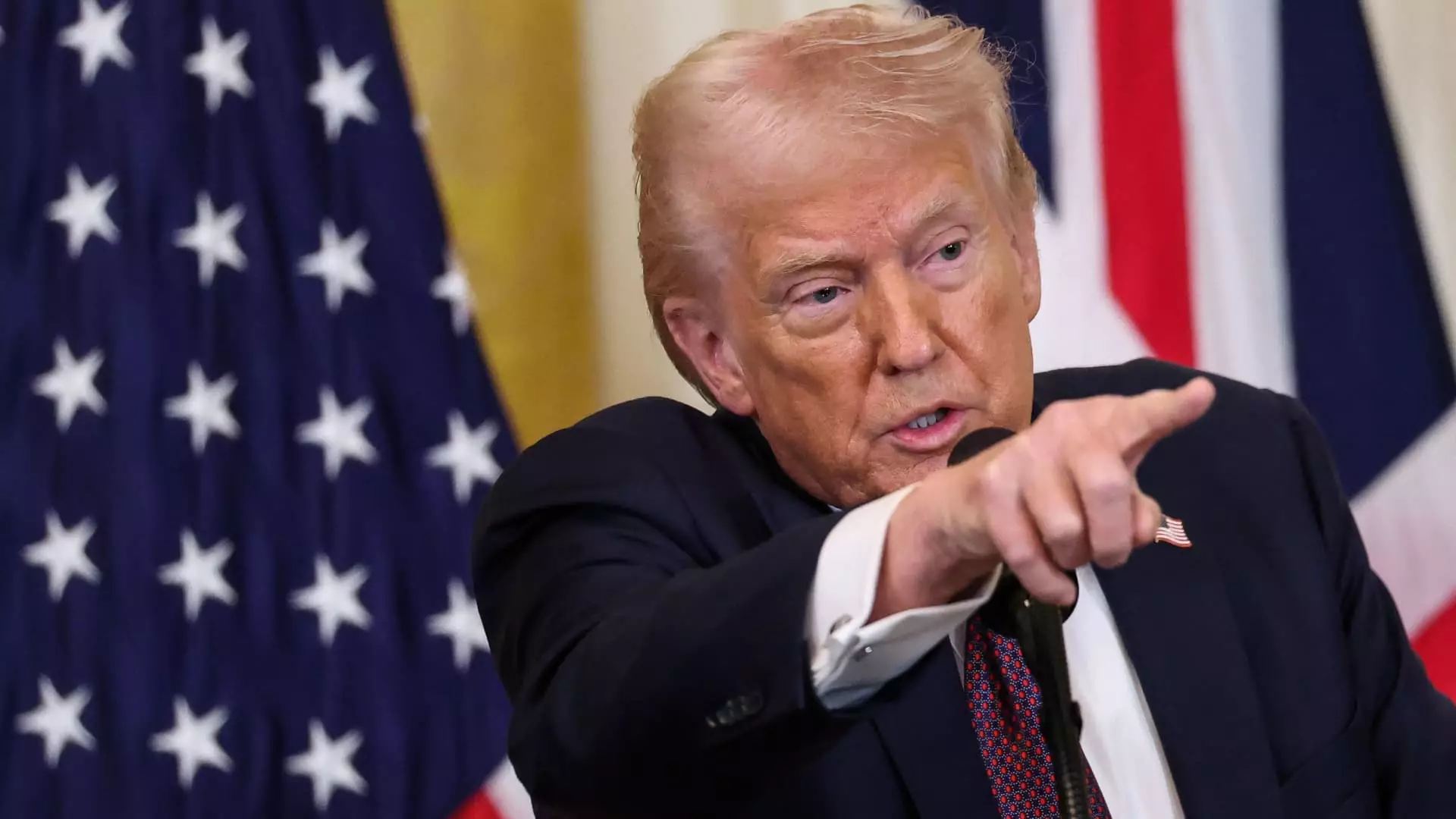For many years, investors have looked to the Federal Reserve’s policies as a life preserver for the stock market, a phenomenon commonly referred to as the “Fed put.” The term encapsulates the notion that the central bank would intervene to support the market during downturns. However, with the expansion of fiscal policies under recent administrations, a new concept—often dubbed the “White House put” or “Trump put”—has emerged. This refers to the potential for the executive branch, specifically under President Donald Trump, to deploy fiscal stimulus in response to market distress, especially when tariffs could threaten economic growth.
Understanding this “White House put” requires delving into the mechanics of how government intervention can stabilize market fears and potentially ward off recession. Market strategist Tom Lee has pointed out that this concept remains crucial, especially as concerns about economic stagnation grow. The focus is not only on maintaining investor confidence but also on averting a decline in economic activity that could lead to a recession—a situation he terms “stall speed.” Thus, the White House finds itself in a position to act decisively in the face of economic headwinds.
The Intersection of Fiscal Policy and Investor Sentiment
Despite the optimism that might accompany fiscal stimulus, any signs of instability can quickly erode investor confidence. Recent consumer surveys indicate a rising unease among the American public regarding the administration’s policies, particularly concerns about inflation. Interestingly, while these worries aren’t immediately reflected in conventional market indicators, declines in bond yields suggest that investors are positioning for potential economic slowdowns.
The situation has been further compounded by a dramatic reassessment of economic growth forecasts. The Atlanta Fed’s GDPNow tracker recently revised its first-quarter predictions downward, indicating a potential contraction of 1.5% following reports of reduced consumer spending. Such data points create a feedback loop where weak economic performance can lead the Federal Reserve to adopt a more dovish stance, potentially facilitating interest rate cuts aimed at bolstering growth.
The concept of a “Trump put” also highlights the politicization inherent in economic policymaking. Market analysts like Michael Hartnett have identified specific thresholds—such as the S&P 500 index level of 5,783—as pivotal points where intervention or verbal reassurance from the White House becomes necessary to maintain market stability. If the market falls below this level, the narrative shifts toward “Stocks Down Under Trump,” raising alarm among investors who, having rooted their strategies in expansive market growth, may now require firm reassurance from government authorities.
Investors have been navigating this volatile landscape over the initial months of the year amid speculation about future tariffs and trade relations. Tariffs imposed on key trading partners like Canada, Mexico, and China have heightened anxiety, creating tension between growth aspirations and fiscal realities. The unpredictability surrounding these policies has rendered the stock market a rollercoaster of sentiment, leading to a cautious investor disposition.
Looking forward, it remains unclear how the “White House put” will evolve amidst shifting policies. While Trump has emphasized regulatory rollbacks and tax cut reauthorizations to sustain economic momentum, the impending reality of tariffs poses a distinct challenge. The prevailing risk is that continued trade disputes may undermine consumer and business confidence, exacerbating the economic contraction fears that the government seeks to mitigate.
Ultimately, the persistence of a so-called “put” relies not only on the application of fiscal tools but also on the clarity of communication from policymakers. As the government maneuvers through this complex interplay of trade, regulation, and fiscal measures, its ability to assuage market concerns while still promoting robust economic growth will be the defining factor in determining the efficacy of its interventions.
As we navigate these uncertain times, understanding the implications of the “White House put” is crucial for investors looking to safeguard against economic volatility. The interplay between political actions and market confidence will continue to shape investment strategies, making this a critical area for ongoing analysis and vigilance.

